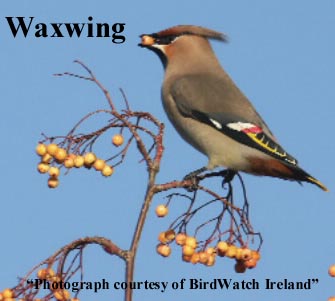|
BIG
BIRD FEEDER
We went to Gambia for a week’s holiday in late November.
Although Gambia doesn’t have any of the great herds of grazing animals,
elephants or giraffes or any or any of the big cats that people go on safaris
to watch in Kenya or South Africa it is very well known as a great destination
to see birds. Long known as a big favourite with British birdwatchers, being
only six hours flight away in the same time zone its birdwatching popularity
has created an important niche in the tourist industry. Many of the hotels
have their own birding guides and there are bird guides at all the good bird
habitats some of them officially sanctioned others just local guys chancing
their arm.
A special feature of the hotel we stayed in was a bird feeding
display every day at 11.30. This was far removed from my own feeders at home
in the garden with small birds coming to take seeds from hanging feeders.
Here the resident bird guide would bring out a large metal tray filled with
pieces of raw meat. Prior to this the trees around the hotel garden would
have been filled with hooded vultures arriving for their daily feed because
vultures and black kites are the recipients of the bird feeding exercise.
As the guide approached they would swoop down from the trees, the heavy wing
beats passing just inches above your head. The vultures would land and mill
around on the ground like a big flock of turkeys hoping for a piece of meat
to be thrown in their direction. Vultures of course are scavengers known for
feeding on carrion they would find already dead or dying. Their large wingspan
allows them to float effortlessly on hot air thermals while their superb eyesight
can spot a dead or dying animal or the activities of other vultures on a carcass.
Although vultures are known as scavengers rather then killers themselves we
sometimes wondered had they read the reference books. The onlookers at the
feeding ceremony would find they were very close to these hungry scavengers
often surrounded by them and both my companion and I found we were having
our legs pecked by the vultures. Although this species, the Hooded
Vulture wasn’t too big they still had a formidable big bill and all
unfortunately have a very malevolent expression. As the vultures crowded around
on the ground the guide would intermittently whistle to
call down the black kites which were wheeling around overhead. He would throw
a piece of meat in the air and the birds would dive down catching the meat
in their claws. When the meat was gone the guide would move over to a tap
on the lawn from which he would fill the tray with water for the vultures
to drink and bathe from. Then the vultures
would stand, all facing the same direction with their wings outstretched to
dry, although after a few days you might suspect they were lining up as a
photo opportunity. Vultures tend to be held in low esteem because of their
feeding habits but they serve a very important function clearing away carrion
that, if it was left to rot, could incubate diseases.
Three species of Asian vultures, the Oriental white-backed vulture,
the long-billed vulture and the slender-billed vulture have been driven to
the verge of extinction within the space of a few years, in some areas declining
95% in 12 years. Initially nobody knew what was causing the rapid decline
in numbers until scientists were able to prove the vultures were dying by
poisoning after eating the carcasses of livestock that had been treated with
a common anti-inflammatory veterinary drug diclofenac which farmers would
give to their animals as a painkiller. When the vultures had eaten dead animals
that had been treated with diclofenac they would rapidly die of kidney failure
and gout. One result was a big increase in the population of wild dogs which
would feed on the carrion the vultures would previously have taken. This wild
dog increase subsequently caused a higher incidence of rabies in India and
Nepal.
Nepal and India have now banned diclofenac and it has been replaced
by a safe drug called meloxicam. In Nepal they have also developed what they
call vulture restaurants where they leave out diclofenac free cattle carcasses
especially for the benefit of two of the endangered species. Old and sick
cattle are bought specially and allowed to die natural deaths, cattle being
sacred to Hindus, and the vultures being fed on them daily are making a slow
recovery. The spectacle at our Gambian hotel was purely for the entertainment
of the tourists and some critics complain all the vultures have intimidated
away the smaller birds from the hotel grounds. But in Nepal the vulture restaurants
are doing
valuable work to save endangered birdlife.
|




